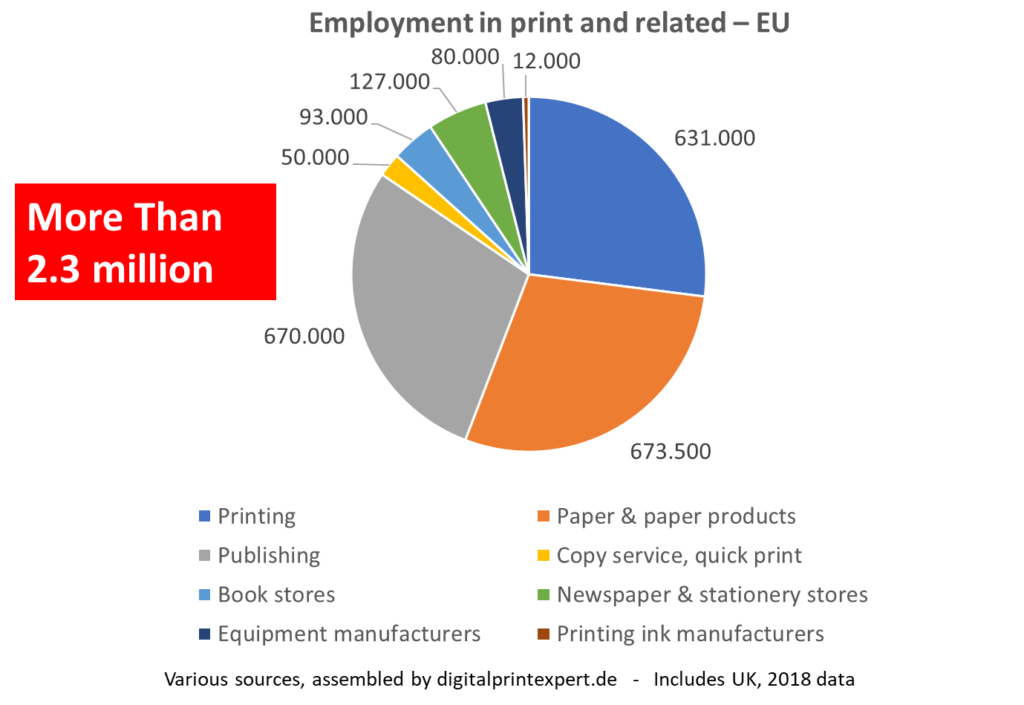Sizing the European Printing Industry
The European printing industry is big, no doubt. However, it is a surprisingly difficult task to determine how big the printing industry in Europe actually is. The available data is incomplete, non-comparable, or even non-existent. As a result gaps have to be filled in, data normalised (to make it comparable), different sourced reconciled, and overlaps in segments sorted out. In short, some in-depth industry expertise is required. Digitalprintexpert.de undertook a 2024 European Print Industry Sizing based on the latest data, facilitated by 20 years of experience in print industry sizing by Ralf Schlözer. He is also the European Editor at WhatTheyThink.com and
The data has been compiled from a variety of sources, complemented by estimates and forecasts, and formatted in a way to make all countries and segments comparable. Excel pivot tables allow for straightforward comparisons and custom selections, instead of having to copy and paste pre-defined tables. The data is based on the year 2022, the most recent year for which a sufficient data basis is available.
Covered in the report are the following countries:
- Austria
- Belgium
- Bulgaria
- Croatia
- Czechia
- Denmark
- Finland
- France
- Germany
- Greece
- Hungary
- Ireland
- Italy
- Netherlands
- Norway
- Poland
- Portugal
- Romania
- Slovakia
- Slovenia
- Spain
- Sweden
- Switzerland
- United Kingdom
The data includes:
- Graphic arts industry, split by commercial print, newspaper print, prepress, and finishing
- for revenue, number of establishments and employment
- historical data since 2012 and forecast to 2030
- Number of graphic arts companies by size classes
– size classes of below 10 employees, 10 to 19, 20 to 49, 50 to 249, and 250+ employees
– historical data from 2012 to 2022 in 2-year increments
- Full print industry sizing for the year 2022 by the number of establishments and revenue, the following segments:
– graphic arts industry, split by commercial print, newspaper print, prepress and postpress
– Packaging print split by folding carton, flexible packaging, corrugated and label print
– Photocopying services
– In-house printing (as estimates)
The European print industry sizing report consists of three easy-to-use Excel pivot tables, which allow for an comfortable selection and analysis of the data. An accompanying PowerPoint presentation provides explanations and definitions. The report can be purchased for €1,800 from digitalprintexpert.de
Additional insight can be booked as a webinar or on-site presentation.
Please contact ralf@digitalprintexpert.de for further details.
